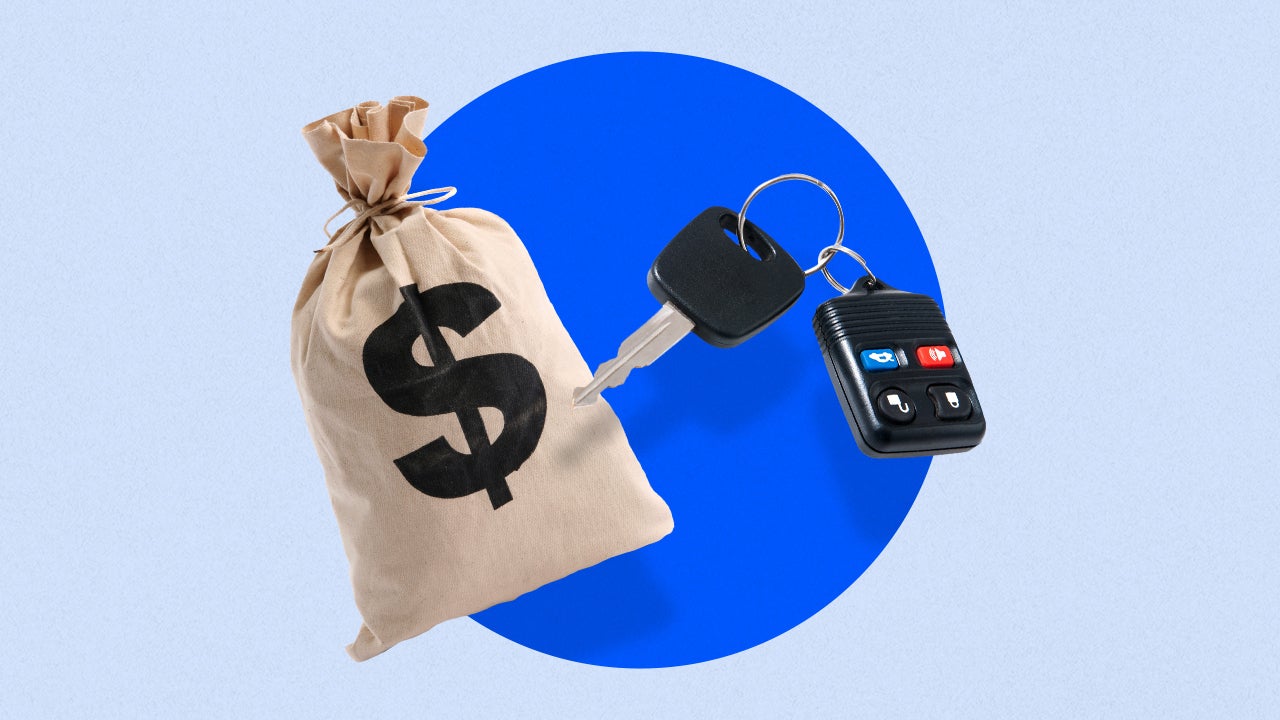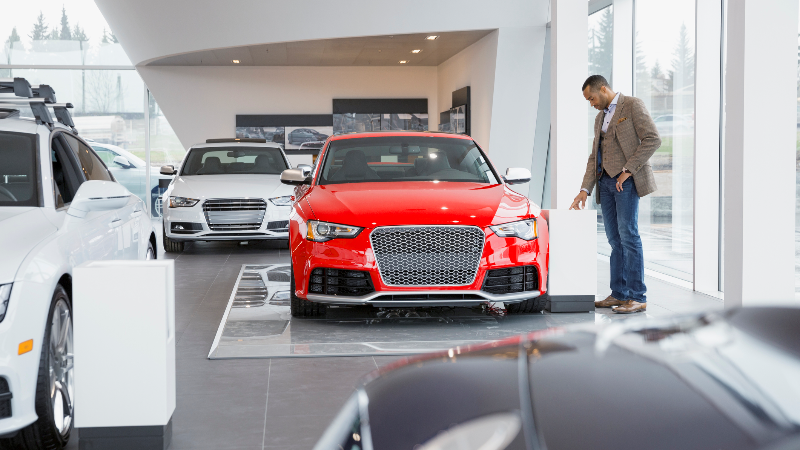Should I repair my car or buy a new one?




Key takeaways
- Repairing an old vehicle can help you avoid high new and used car prices — and high interest rates.
- If you’re facing expensive repairs on an older vehicle, buying a new vehicle may save you money over the long run.
- Compare the cost of repairs against the cost of an auto loan to determine what makes the most sense for your bottom line.
Your car requires regular investments to keep it running. At some point, however, you will question whether it’s wise to keep putting money into an old set of wheels. Should you pay for a major fix, or would it make more sense to put that cash toward a new vehicle?
Compare the cost of repairs against the potential cost of a car loan and the value of your current vehicle. These numbers can help you determine if making more repairs is a losing investment — even with sky-high car prices in the current market.
When to buy a new car vs. repair your old one
Fixing a car or buying a new one both come with big financial implications. As you crunch the numbers of a repair bill or calculate the cost of an auto loan, consider the benefits of each move.
Benefits of repairing your car
- You can avoid paying record-high prices: Matt Degen, senior editor at Kelley Blue Book, suggests that it may be wise to hold off on buying a new car if the repair is only a few hundred dollars. And while buying used can save you some money in a high-cost environment, a used set of wheels could also need repairs.
If you’re shopping for a new car right now, challenges remain and uncertainty looms, unfortunately. … Prices are high by historical standards, but that’s the reality we now live in. Furthermore, interest rates also remain high, which means costlier monthly payments.— Matt Degen, Kelley Blue Book senior editor
- You’ll have one bill instead of a new set of monthly responsibilities: If you can cover the repair and avoid getting locked into a new auto loan, you can keep your monthly budget in good shape. “Even if you had a high repair bill of a few thousand dollars, that would only be enough for a down payment on a new car,” says Ronald Montoya, senior editor at Edmunds. “Then, you’d still have to contend with the monthly payments for another five to six years or so.”
- You can keep your insurance costs in check: Since a used car tends to be cheaper to replace, insurance for an old car will likely be more affordable than covering a brand-new ride.
Benefits of replacing your car
- You might be able to save in other areas: There are some issues that can’t be repaired, such as your car’s gas mileage — and that’s worth remembering given the price of a gallon of gas is over $3 in some markets, according to data from AAA. “If you’re driving something that is draining your wallet, it might be time to consider a hybrid or electric model,” Degen says.
Both new and used car prices may increase in 2025
Kelley Blue Book data from February 2025 shows the average transaction price for new vehicles was $48,039, a 1 percent increase over last year. While average prices remain below the all-time record of $49,958 set in 2022, they are still historically high. But Degen points to President Donald Trump’s threats of imposing tariffs as the real challenge.
“If they take effect as planned, the tariffs could mean many new models will cost thousands more,” he says. “By some estimates, the average price of a new car could increase from between $3,000 and $10,000.”
Degen notes that as new car prices increase, demand for used cars rises, eventually raising their prices as well. In the fourth quarter of 2024, the average price of a 3-year-old used vehicle was $29,710, up 3.3 percent year over year. Montoya agrees that used car demand will likely grow in 2025.
“This factor, combined with the limited inventory Edmunds analysts are predicting for near-new used vehicles beginning this year, is likely to cause used car prices to rise,” he says. “This means that the cost of replacing a car could be higher, and you may want to reconsider the repair if it will buy you more time in a less expensive, or paid-off, vehicle.”
How to tell if it’s time to replace your car
In some cases, there isn’t much debate over replacing versus repairing. Even if you have to take out a loan for the new vehicle, it may still make sense financially in the long run if you’re able to secure a competitive auto loan rate.
If any of these signals apply to your situation, it’s probably time to look for a new vehicle.
The numbers don’t add up
Big car repairs come with big prices, but continual small repairs can add up, too. At some point, it becomes more cost-effective to replace.
“If the cost of repairs is more than half of the vehicle’s value, it’s worth considering the purchase of a different car,” Montoya says.
Degen agrees, adding, “This is especially so if the vehicle will likely continue to need repairs down the road.”
For a car that you still owe a balance on, you may want to look into selling it before you end up upside down on the loan. In this case, it can be a better financial move to purchase another vehicle, especially if you can obtain an auto loan with favorable rates. That said, average auto loan rates have remained high — so it’s still worth determining if the cost of interest outweighs the cost of repairs.
Calculate your car’s value, then compare it with the sum of what you owe on the loan and estimated repair costs. If the second number is larger, or nearly the same, as the first, it might be time to say goodbye.
The issues are causing major headaches in your daily life
Montoya points out that if the car’s issues are creating hiccups in your daily routine — making your kids late to school or you late to work — you probably need to consider a replacement. This is especially true when said hiccups end up causing financial strain. It may be worth an added monthly cost to avoid being stuck on the side of the road when your car fails.
You have a serious safety concern
If the car can’t pass a state smog inspection test, you’re going to need to address a major issue. And if the car presents any kind of danger, start browsing.
“You can’t put a price tag on safety,” Degen says. “If your car presents a threat to you or other drivers, it’s time for a new one.”
3 tips to make your car last longer
Are you trying to squeeze some extra life out of your current car? Rather than rush to the dealer, there are a few simple car care steps to keep your car moving.
- Follow the regular service schedule: Visit the mechanic regularly to identify potential issues before they become huge problems. Get regular oil changes, replace the air filters and follow your owner’s manual to determine what you need to do. A quick trip to the mechanic at regular mileage markers can potentially extend the life of your car.
- Pay attention to alerts: Sure, that check engine light might seem like an annoyance, but it’s trying to tell you something. When your car’s system issues a warning, don’t delay — go get it checked out by an expert.
- Give it a new shine: Cosmetic clean-up can do a lot. Degen points out that paying for a good detail of your old car can make a significant difference. “It really does something for you psychologically,” he says. “Just getting into a car that looks clean and smells clean can make you think twice about the immediate need for a new one.”
Bottom line
Cars don’t last forever. If you’re buying a new car over repairing an old one, start by comparing the costs of each option. Look at your car’s current value and compare it with an estimate for the repair bill. Seeing those two numbers next to each other should give you a good idea of whether it makes more financial sense to repair or replace it. If you’re facing repairs that cost more than half the value of your vehicle, it may be time to start shopping.
You may also like

What are the most common types of car loans?

Buying car insurance for a new car



